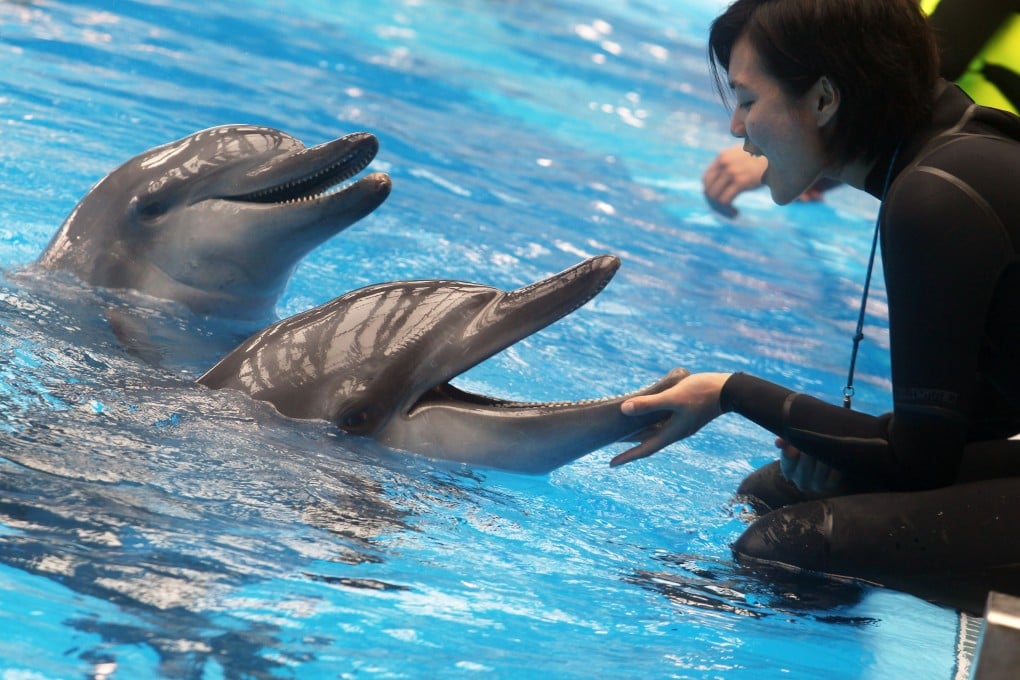Are Hong Kong's dolphins better off in captivity or in the wild? Activists and experts weigh in

Half of Ocean Park’s dolphins live in a research facility at a quieter end of the complex. They’re confined to tanks overlooking the South China Sea, where endangered white dolphins are free to hunt their own fish, explore their expansive territories, and do not experience what activists describe as the manifold “stresses” that characterise life in captivity.
Pollution, irresponsible fishing expeditions and a habitat compromised by the construction of the gigantic bridge linking Hong Kong to Macau and Zhuhai, and the airport’s massive third runway project all threaten to wipe out the remaining 61 Chinese white dolphins left in the wild.
That number has shrunk from 158 in the last 10 years. “We have an increased number of strandings,” says Ocean Park’s Suzanne Gendron.
She explains that researchers have found a host of factors responsible for killing and maiming the mammals, such as toxins and organic pollutants in the Pearl River Delta region. They are plagued by lower fertility rates and high infant mortality.
With conditions like these, Ocean Park argues that dolphins fare no better in the wild than they do in tanks. The park boasts that the average lifespan of its captive collection is no shorter than that of their wild counterparts – around 40 years – and that infant mortality rates are relatively low.
